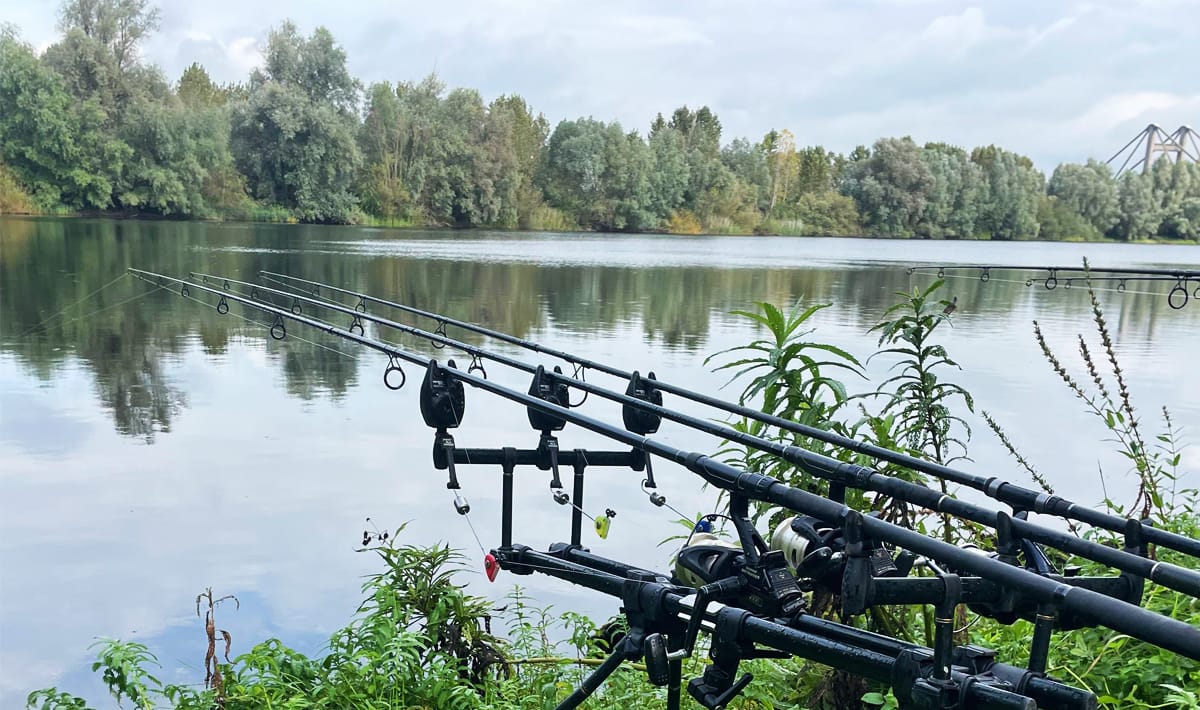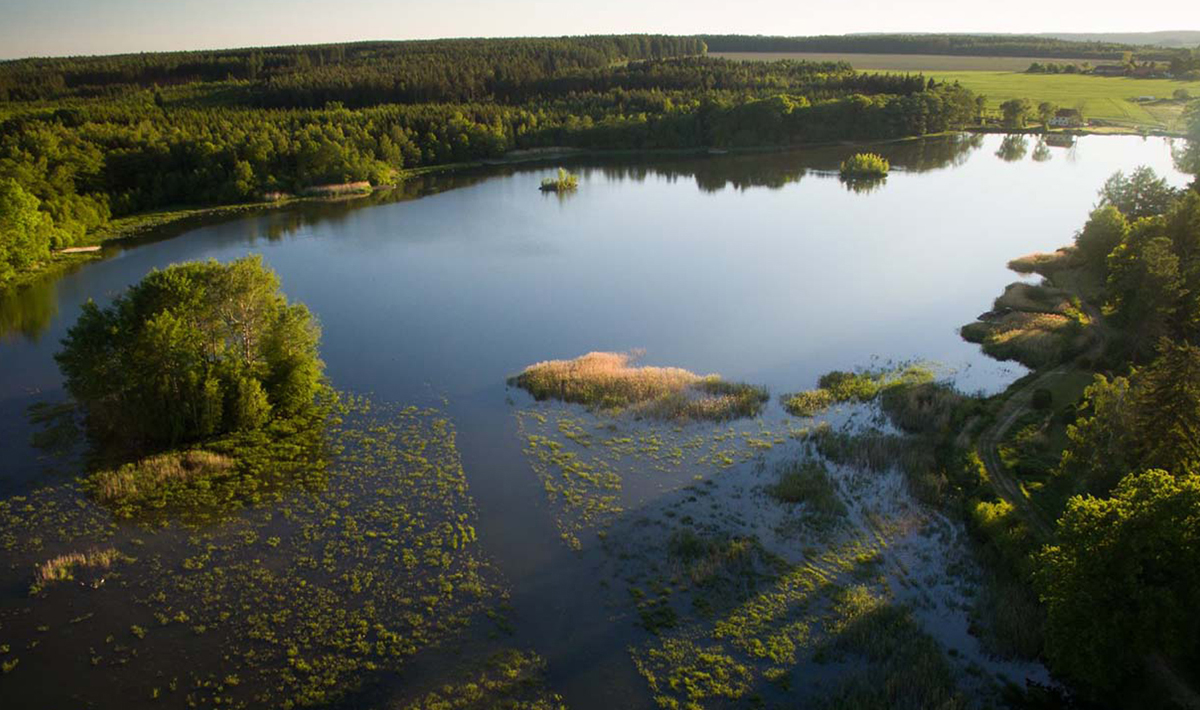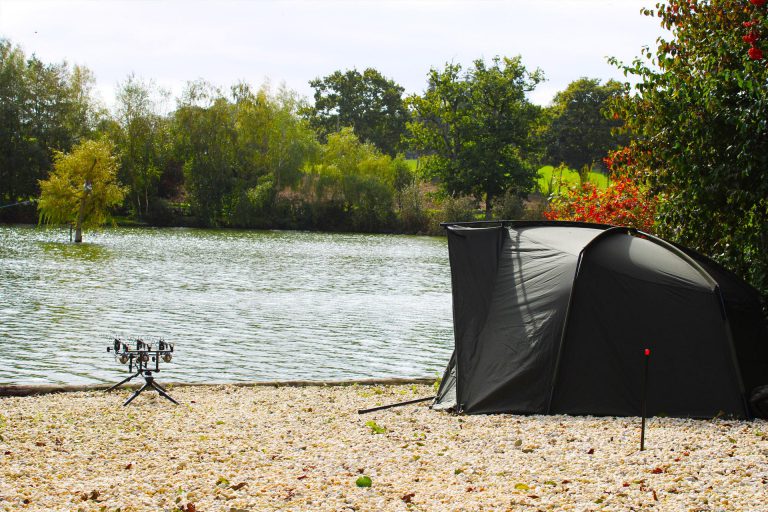Whether you like carp fishing on a commercial fishery or not, it’s very popular among carp anglers in the Netherlands and abroad. You have the certainty of a swim, (large) carp, safe fishing and often facilities nearby in the form of a cabin or shower.
How Can I Best Fish on a Commercial Fishery?
Unfortunately, I can’t give you a direct answer to that. There are many circumstances you need to consider. Before you pack your bags, it’s wise to gather as much information as possible about the carp water, the rules, fish stock, bottom structure, obstacles, etc. You can often find information about the carp water you’ve booked or want to book on various websites or forums. Weather can have a big influence on catches, but we can’t (fortunately) influence that. What we can influence is the choice of bait and feed, which is very important, but bottom structure and bait presentation are just as important, especially on a pressured water.
OK, I Have the Basic Information, What Now?
In many cases, leadcore fishing is not allowed and you must fish with barbless or “Micro Barb” hooks. Therefore, first adjust your rig to the rules of the commercial fishery. Managers of commercial fisheries don’t set these requirements without reason; they do this for the welfare of the carp.
Material Choice
Assemble your rig based on the regulations, bottom structure, bottom type (sand, clay, silt, peat), angling pressure (long or short rigs). If you’re allowed to use a bait boat or rowing boat, you can fish perfectly with an inline system. If you can’t use either and must cast, you’re often limited to a swivel system. Line awareness is one of the biggest spook factors for carp. Make sure your line sinks well and that you don’t fish with tight lines. You can do this by using a back lead or by fishing with slack lines. Make sure that after casting or rowing out, you give your line time to sink and use the lightest possible hangers to keep as little tension on the line as possible. It also prevents problems when your neighbor gets a run and takes all your lines with him because you’re fishing with tight lines, or perhaps even worse, spending hours untangling everything and having to cast/row out all your rods again in the middle of the night.

Stonze, breaks through pressure and better for the environment
The Bait & Feed Choice
The bait choice depends on the carp stock and the presence of other fish species. First check the regulations to see what you’re allowed to fish with! If there’s (almost) only carp, it often pays to mix nicely. You can think of groundbait, particles (tiger nuts, hemp, corn), pellets, crushed boilies, boilies in various diameters, and so on. Some carp eat everything and other carp have a real preference for one type of bait. By mixing, you reach more carp! Additionally, you can choose to boost your bait! It often works very well to get your swim started or to tip the carp over the edge. You can also mix your carp bait with fish oil or salmon oil. This way you not only get more attraction underwater, you also ensure that fish are attracted to your feeding spot from other water layers.
When to Feed and how much?
On a commercial fishery, generally a lot of feeding takes place. It’s good to know what was caught before your arrival on the swim where you’re going to fish. If not much was caught, there’s a good chance there’s still quite a bit of feed lying around and it’s wise not to feed heavily right away. Keep good track of what you feed, especially when the weather is against you, it can pay to feed little or not at all while other anglers feed heavily. The reverse can apply just as well, but then it often pays to wait longer before fishing. If only a bait boat may be used, fishing is often compact and it’s worth trying to create a swim where you feed spread out. Use your bait boat only to row out your lines.
Try to figure out when the fish are not feeding. This is a good time to feed; don’t wait until evening like most carp anglers do, because then you have a good chance of disturbing the fish that are feeding again.
The Swim Choice
Beforehand, you could gather information about the best swims, water depths, and obstacles. First look at the water calmly and see where feeding is taking place. With a bait boat with depth finder, you can nicely look for a slope. If you have a rowing boat with you, you could use a probe to look for sand bars and mussel beds. Depending on the season, water temperature, and weather conditions, you can determine at what depth you can best fish. Furthermore, there’s a so-called changeover moment when the carp know that no fishing will take place for a few hours. Many carp anglers often set up first and only start hours later. Quickly tying a boilie to your hair with a PVA bag and casting randomly can lead to a nice start to your day.
Creating Peace
Have you now rowed out/cast all lines and created a feeding spot? Then it’s now time to create peace. On a commercial fishery, swims are often under heavy pressure and catches are often reduced as a result. Creating peace always pays off in the end. If catches are disappointing, you can choose to take your rods out for a few hours or even a day/night so that you create peace and safety on your swim, and your feed can do its work. Often success guaranteed!
Creative Carp Fishing
Especially on a commercial fishery, it’s very important that you’re creative. Don’t go with all your rods on the same approach, but try a different rig, bait type, or a completely different swim. Try different things, so you find out what works best. Often you’re not alone and there are other carp anglers from whom you can get information. Sometimes fishing is always done at long range, while the margins are often forgotten. Every carp angler throws his used boilie back into the water, under the bank. Don’t leave your stalking rod at home but take it with you. An often forgotten, but oh so effective weapon! Create a spot (or multiple spots) with a few corn kernels and some particles, wait until you see a carp feeding, put a few corn kernels on your hook and bam… a bonus fish! Often the carp you catch with stalking are rarely or never caught.
In Conclusion
Everyone (I assume) goes carp fishing on a commercial fishery for their pleasure/hobby. Often space is limited and it can be very busy. Therefore, consider each other, then you keep it fun and enjoyable.
Good luck!, Regards Bert



